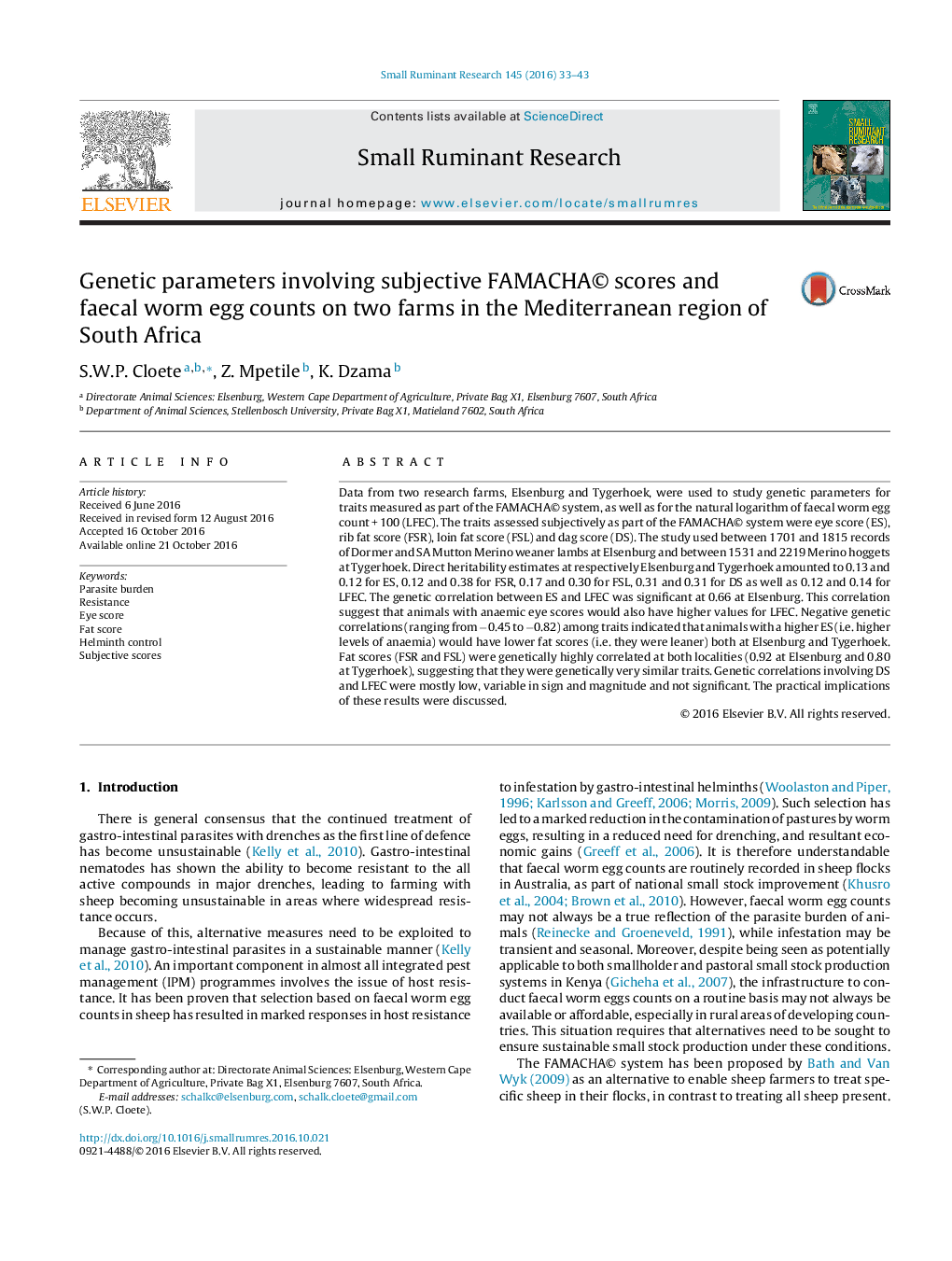| Article ID | Journal | Published Year | Pages | File Type |
|---|---|---|---|---|
| 5544328 | Small Ruminant Research | 2016 | 11 Pages |
Abstract
Data from two research farms, Elsenburg and Tygerhoek, were used to study genetic parameters for traits measured as part of the FAMACHA© system, as well as for the natural logarithm of faecal worm egg count + 100 (LFEC). The traits assessed subjectively as part of the FAMACHA© system were eye score (ES), rib fat score (FSR), loin fat score (FSL) and dag score (DS). The study used between 1701 and 1815 records of Dormer and SA Mutton Merino weaner lambs at Elsenburg and between 1531 and 2219 Merino hoggets at Tygerhoek. Direct heritability estimates at respectively Elsenburg and Tygerhoek amounted to 0.13 and 0.12 for ES, 0.12 and 0.38 for FSR, 0.17 and 0.30 for FSL, 0.31 and 0.31 for DS as well as 0.12 and 0.14 for LFEC. The genetic correlation between ES and LFEC was significant at 0.66 at Elsenburg. This correlation suggest that animals with anaemic eye scores would also have higher values for LFEC. Negative genetic correlations (ranging from â0.45 to â0.82) among traits indicated that animals with a higher ES (i.e. higher levels of anaemia) would have lower fat scores (i.e. they were leaner) both at Elsenburg and Tygerhoek. Fat scores (FSR and FSL) were genetically highly correlated at both localities (0.92 at Elsenburg and 0.80 at Tygerhoek), suggesting that they were genetically very similar traits. Genetic correlations involving DS and LFEC were mostly low, variable in sign and magnitude and not significant. The practical implications of these results were discussed.
Keywords
Related Topics
Life Sciences
Agricultural and Biological Sciences
Animal Science and Zoology
Authors
S.W.P. Cloete, Z. Mpetile, K. Dzama,
